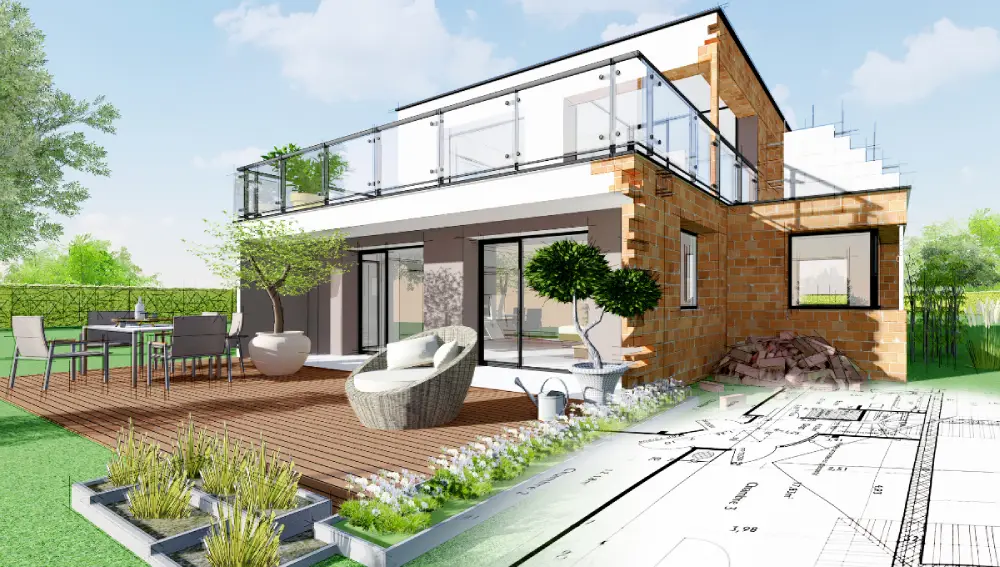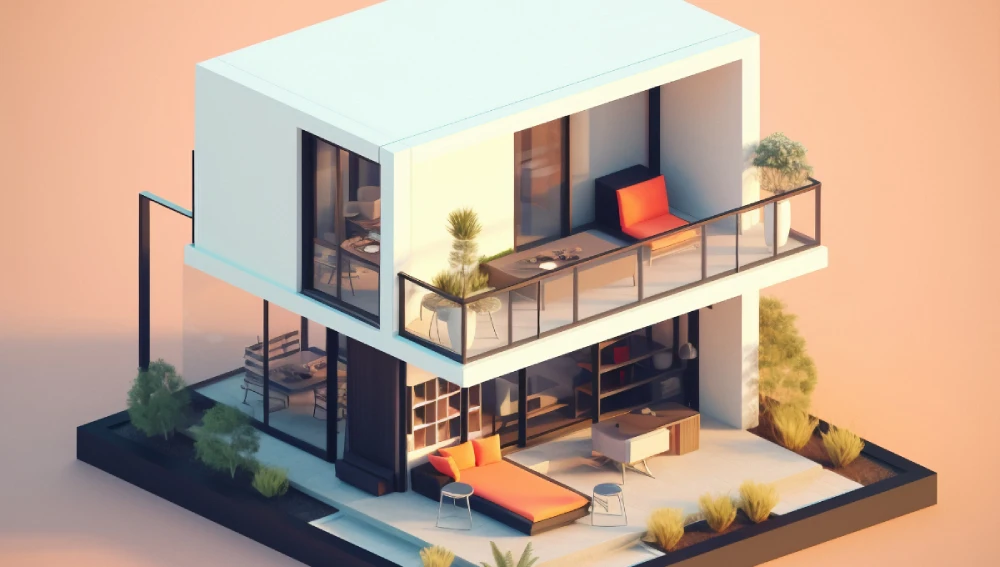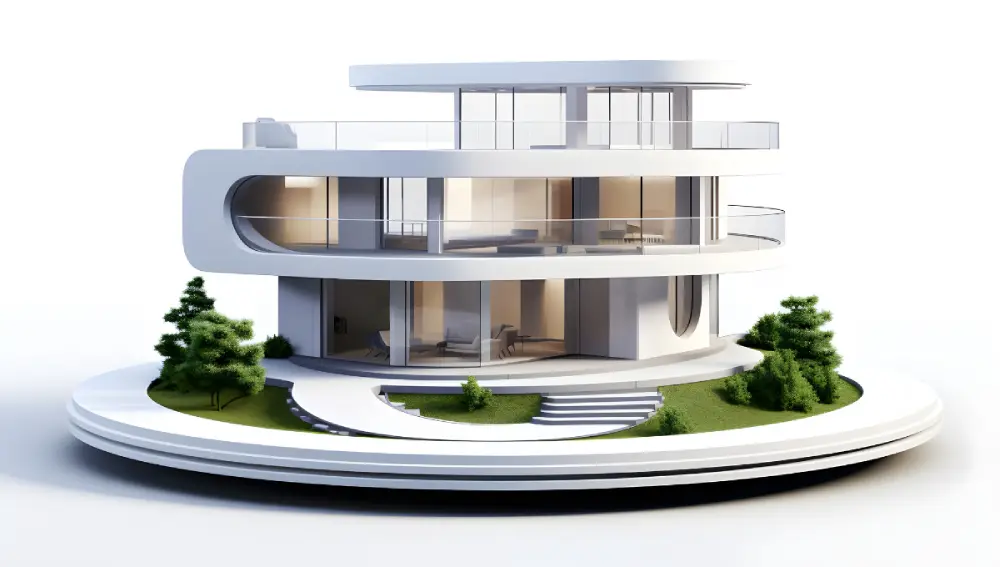Have you ever felt awe after seeing the functionality and the attractiveness of a house? Well, then, most probably, 3D elevations are behind these masterpiece homes.
3D elevation can be used to design both traditional and modern houses. Adding motifs, lines, frames, and colorful visuals are part of 3D elevations. The design is first completed in software and then implemented into real-time models.
This blog gives details on different types of 3D elevation designs that you can utilize to make your home unique.
What are 3D Elevation Designs?
3D Elevation Designs are detailed, three-dimensional representations of building exteriors created using specialized computer software. These designs provide a realistic view of how a building will look once constructed, showcasing architectural elements, textures, colors, and materials. By visualizing the structure from different angles, 3D elevation designs help architects, builders, and clients make informed decisions about the aesthetic and functional aspects of a building project.
Different types in 3D elevation designs for houses

Front Elevation
This is the view of the house from the front. Front elevation includes the design elements visible from the street, like the main entrance, windows, and facade. It’s often the most detailed elevation, as it gives the first impression of the home. This includes the overall appearance of the house from the front, such as wall finishes, textures, and colors.
Side Elevation
A side elevation shows the view of the house from the side. It helps in understanding the depth, height, and profile of the structure. This view includes details like the slope and type of the roof, side windows, side entrances, and any extensions such as garages or side wings.
The side elevation is useful for visualizing how the house will look in profile and planning extensions or side entrances. It also assists in understanding the sunlight and shade patterns on the sides of the house.
Rear Elevation:
The rear elevation is the view of the house from the back. It shows elements like back doors, windows, patios, decks, and any backyard features. This view helps in planning the backyard and outdoor living spaces, showing how the house connects with the backyard and any rear-facing views. The rear elevation is important for understanding the design and functionality of the back of the house, including outdoor features and landscaping.
Split Elevation:
A split elevation combines multiple views of the house, such as front, side, and rear, into one design. This type of elevation provides a comprehensive view from different angles, showing how different parts of the house connect and transition. Split elevations are useful for getting a holistic view of the house and understanding the overall design and structure from various perspectives.
Isometric Elevation:
An isometric elevation gives a three-dimensional view where the house is rotated to show the front, side, and top simultaneously. This type of elevation highlights clear dimensions and spatial relationships, providing a comprehensive understanding of the house’s shape and structure. Isometric elevations are useful for visualizing the overall structure in three dimensions and understanding how different parts of the house connect.
Axonometric Elevation:
An axonometric elevation is similar to an isometric elevation but uses different scales along the three axes. This type of elevation provides a technical and precise perspective, showing a rotated view with detailed dimensions and spatial relationships. Axonometric elevations are useful for technical drawings and detailed design work, helping to understand the precise dimensions and spatial relationships of the house.
Different types of Styles in 3D elevation designs for houses

A 3D elevation design is more than flat drawings. Computer-aided design (CAD) is used to design and visualize the home’s exterior, giving realistic ideas to it. Different types of 3D elevation designs are listed below:
Modern Marvel
The modern 3D designs are a clear representation of clean lines, modest elements, and primarily aim in functionality. These designs have indoor windows that blend effortlessly with the outdoors creating a space for natural air and light. Glasses, woods, geometric floors, and flat roofs are some of the hallmarks.
Timeless Elegance
Timeless elegance mostly involves traditional designs that bring in charm and nostalgia. They include symmetrical facades, warm colored bricks, stone exteriors, intricate designs of cornices, and a welcoming porsche. The designs are inspired from historic buildings that depict the roots and offer a sense of permanence.
Craftsman Comfort
The 3D elevation of craftsman comfort brings in a warm and inviting ambience. The center of the design is focused on wood and stone. This center design is supported by shingle roofs, exposed beams, and decorative brackets. The craftsmanship and compound designs give it a sense of art and quality.
Mediterranean Magic
The Mediterranean designs engulf the sunsets of the sea. Terracotta designs, warm earth tones, rustic tones, and iron palette are included in the designs to elevate the elegance. These designs play an important role in highlighting the important aspect of the house and bring in a sense of relaxation.
Rustic Retreat
As the name suggests the designs include an organic aesthetic and natural elements. Thick woods with aesthetic touch, enriched stone accents, textured tiles, and porches that are blurred indoor and outdoor. Most of the designs have a large window that allows natural light to enter the home. It has both eye-catching designs and natural elements.
Mid-Century Modern
The mid century moderns have clean lines, open plane floors, and highlights the outdoor and indoor ambience. Geometric styles and overhanging large windows are the particular highlights of this style. This type of 3D elevations connect the style of surrounding landscape and living space.
3D Elevation for single floor
A 3D elevation for a single-story building will be added using the same designs as the bungalow elevation. These designs can utilize most of the architectural styles for single-floor elevation houses. The home style that falls into this sector includes ranch-style homes.
These houses showcase their low-slung silhouette and open floor plans. In terms of layout, the design offers flexibility and is well-suited for those who want to add a modern touch to their single-story building.
3D Elevation for Small House
As far as small houses are concerned, adding 3D elevation designs will not be a constraint. Small houses can be designed using 3D elevation to increase the space and create an illusion of spacious balconies. For people who are open to eco-friendly houses and those seeking compact, effective houses, 3D elevation can be utilized.
3D elevation for Duplex Houses
A 3D elevation design for duplex houses creates a distinct 3D model for each unit, bringing out its creative side and virtual appeal. The design elements for duplex houses include color schemes, and the designs are mostly used to attract residents.
The 3D duplex houses increase the overall aesthetics of the neighborhood. Additionally, eco-friendly elements can also be incorporated into 3D model houses.
Conclusion
3D elevation designs play a crucial role in highlighting your home. They increase the overall look and make it stand out in the neighborhood. Additionally, adding 3D elevations to duplex and triplex houses makes them functional and allows a personal touch to each floor. Go, book your slot with experts, and give your home a 3D new look.
FAQs
A 3D house elevation is a three-dimensional addition to a two-dimensional building that is executed through a 3D drawing.
The best simple materials that you can use to elevate your house are steel, classic wood, metal, brick, and concrete. This helps to elevate your house with minimal designs.
The cost of a 3D elevation house is 5 lakhs to 5.4 lakhs.

